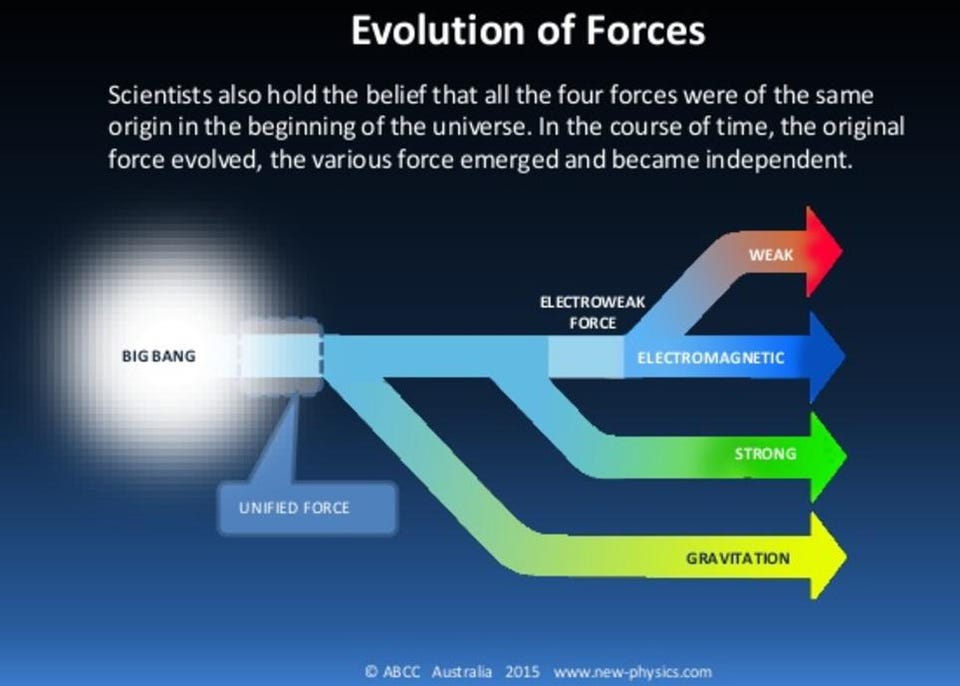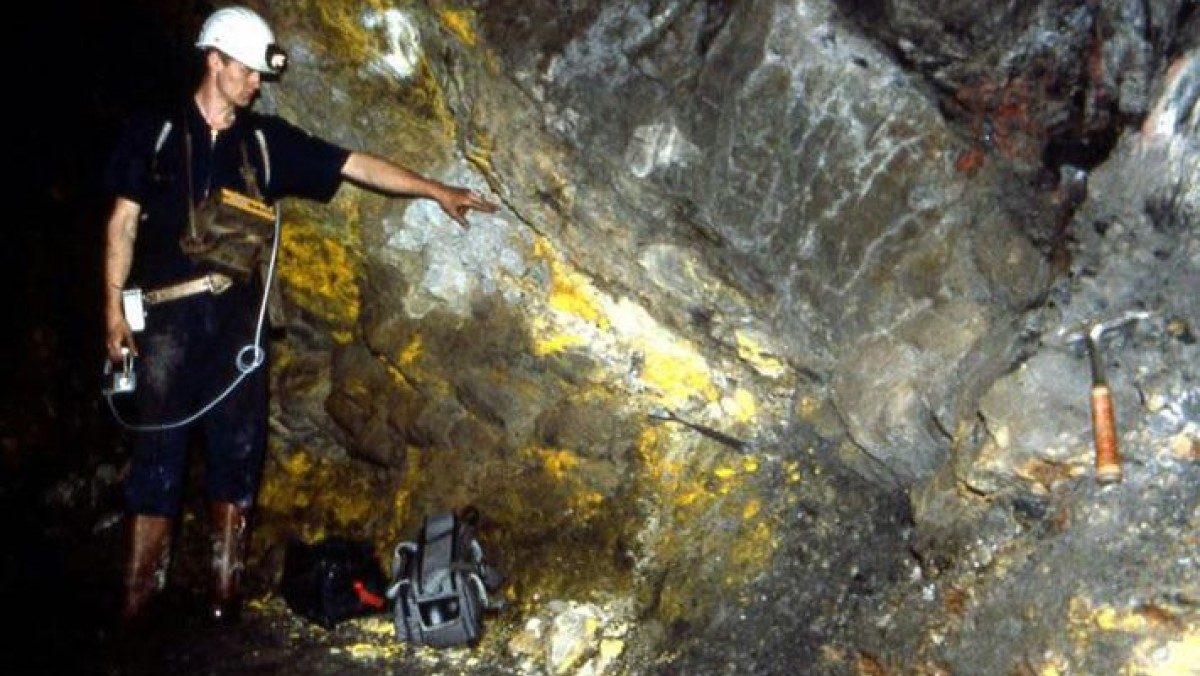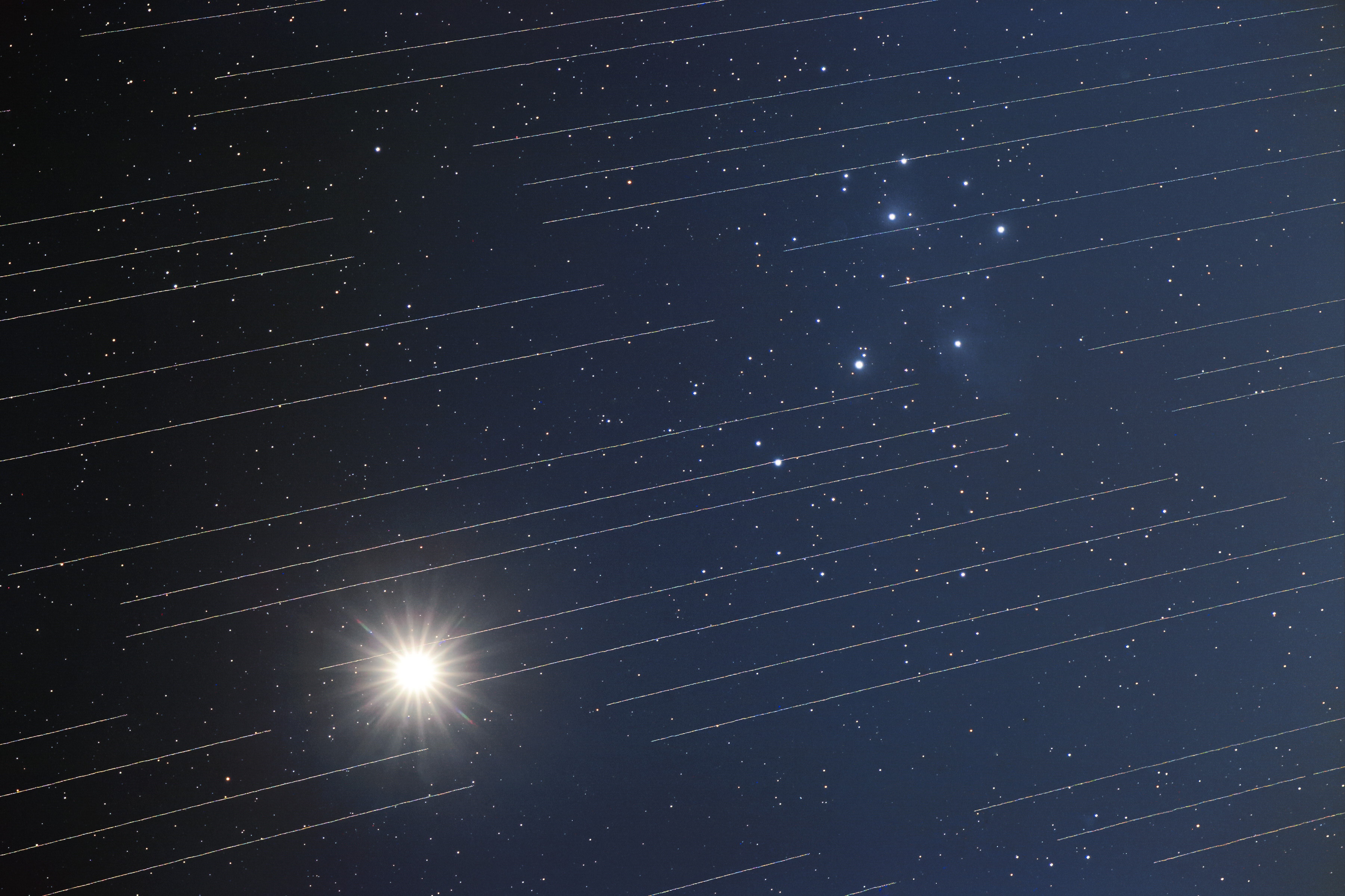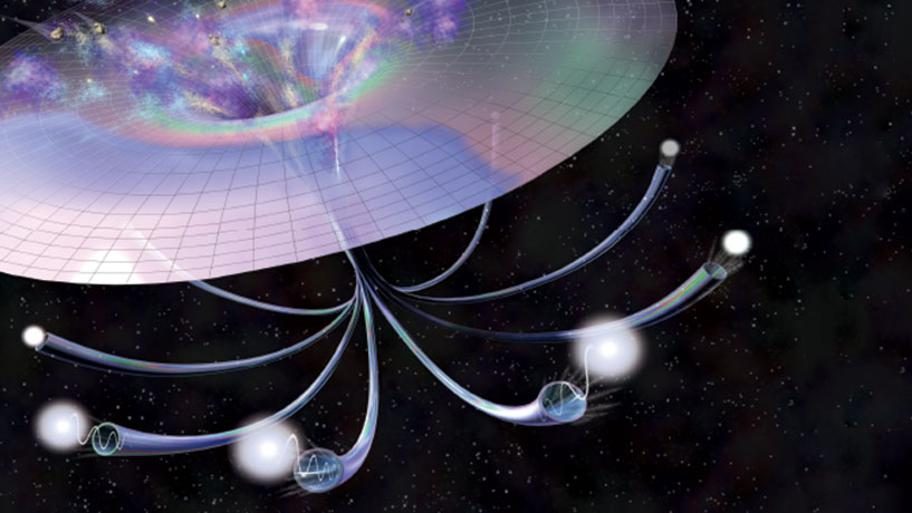Ask Ethan: How do we know the Universe is 13.8 billion years old?
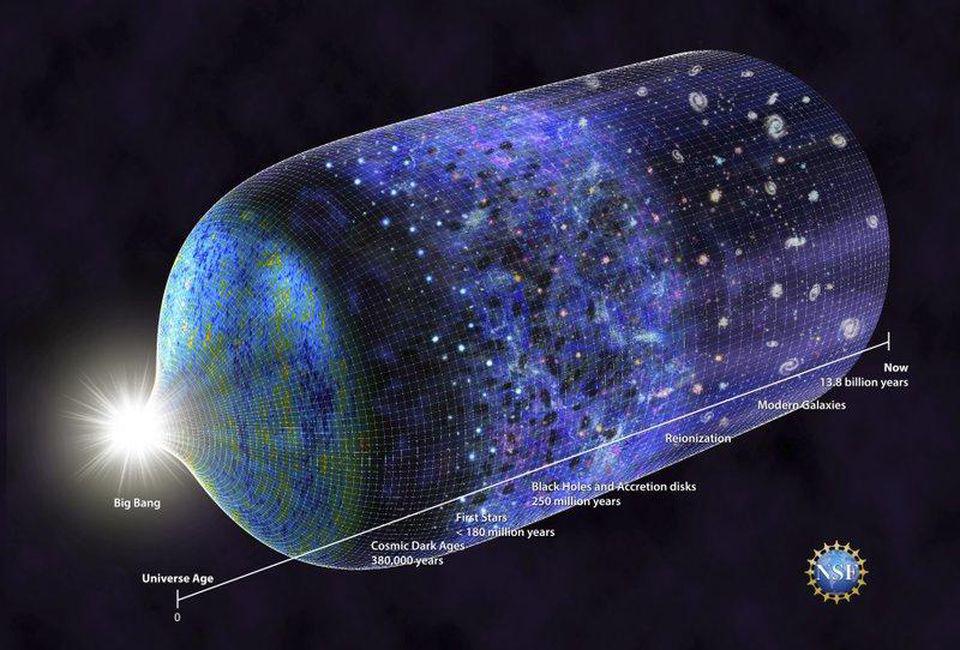
- After over a century of debate over the age of the Universe, including a period of decades where many argued that the Universe was infinitely old, we finally know its age: 13.8 billion years.
- There are a number of challenges to this claim: from some who claim the expanding Universe’s uncertainty can change its age to those who claim to have found stars older than the Universe.
- And yet, we can still confidently state, despite those objections, that the Universe really is 13.8 billion years old, with an uncertainty of only 1% to that figure. Here’s how.
How old is the Universe? For generations, people argued over whether the Universe had always existed, whether it had a beginning, or whether it was cyclical: with neither a beginning nor an end. But starting in the 20th and continuing into the 21st century, we not only drew a scientific conclusion to that question — the Universe (as we recognize it) began with a hot Big Bang — but we were able to pinpoint precisely when that beginning occurred.
We now state, with confidence, that the Universe is 13.8 billion years old. But how confident can we really be in that answer? That’s what Adimchi Onyenadum wants to know, asking:
“How did we arrive at the conclusion that the age of the Universe is 13.8 billion years?”
It’s a very bold claim but one astronomers are more confident in than you might realize. Here’s how we did it.

The simplest and most straightforward way to measure the age of the Universe is simply to look at the objects that are in it: stars, for instance. We have hundreds of billions of stars in the Milky Way galaxy alone, and the overwhelming majority of the ancient history of astronomy was devoted to studying and characterizing stars. It remains an active field of research today, as astronomers have uncovered the relationship between observed properties of stellar populations and how old they are.
The basic picture is this:
- a cloud of cold gas collapses under its own gravity,
- leading to the formation of large numbers of new stars all at once,
- that come in all different masses, colors, and brightnesses,
- and the largest, bluest, brightest stars burn through their fuel first.
Therefore, when we look at a population of stars, we can tell how old it is by looking at what types stars still remain, and what classes of stars are completely gone.

Our galaxy has stars of all different ages in it, but the measurements of any individual star will be riddled with uncertainties. The reason is simple: when we view an individual star, we see it as it is today. We cannot see — or know — what happened in that star’s past history that may have led to its present condition. We can only view a present-day snapshot of what exists, and have to infer the rest.
You’ll often see attempts made to measure the age of an individual star, but that always comes along with an assumption: that the star didn’t have an interaction, merger, or other violent event in its past. Because of that possibility, and the fact that we only see the survivors when we look at the Universe today, those ages always come along with massive uncertainties: on the order of a billion years or even more.
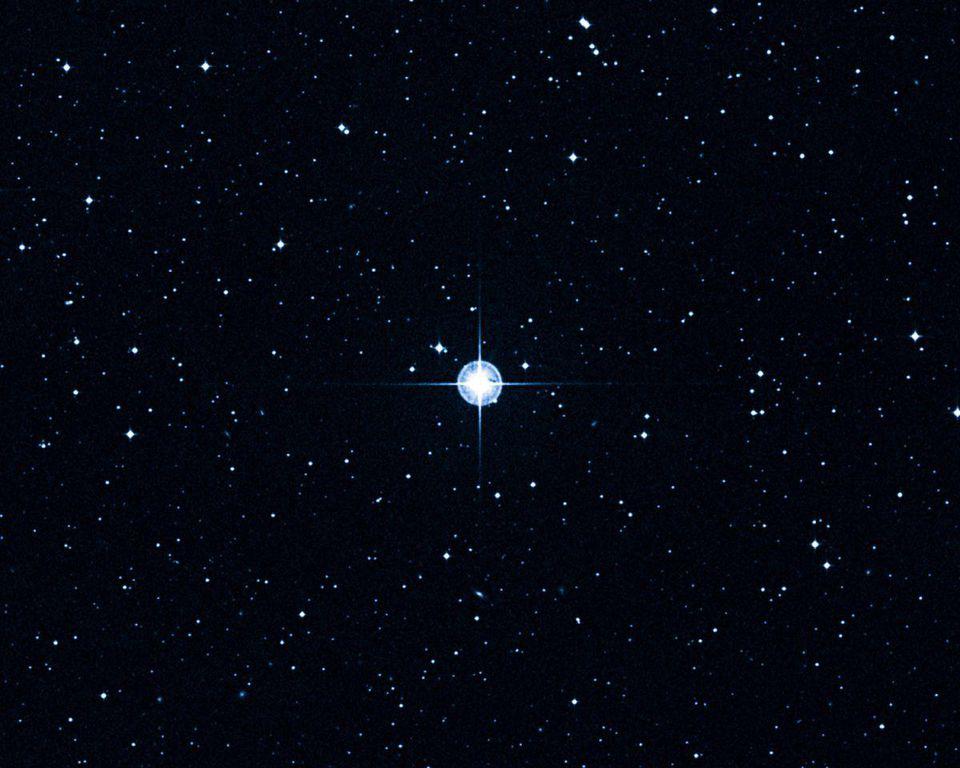
However, the uncertainties are much smaller when we look at large collections of stars. The collections of stars that form within a galaxy like the Milky Way — open star clusters — typically contain a few thousand stars and only last a few hundred million years. The gravitational interactions between these stars eventually cause them to fly apart. While a small percentage last a billion years or even a few billion years, we have no known open star clusters that are even as old as our own Solar System.
Globular clusters, however, are larger, more massive, and more isolated, found throughout the halo of the Milky Way (and most large galaxies). When we observe them, we can measure the colors and brightnesses of many of the stars inside, enabling us — so long as we understand how stars work and evolve — to determine the ages of these star clusters. Although there are uncertainties here as well, there is a large population of globular clusters, even within the Milky Way alone, with ages of 12 billion years or more.
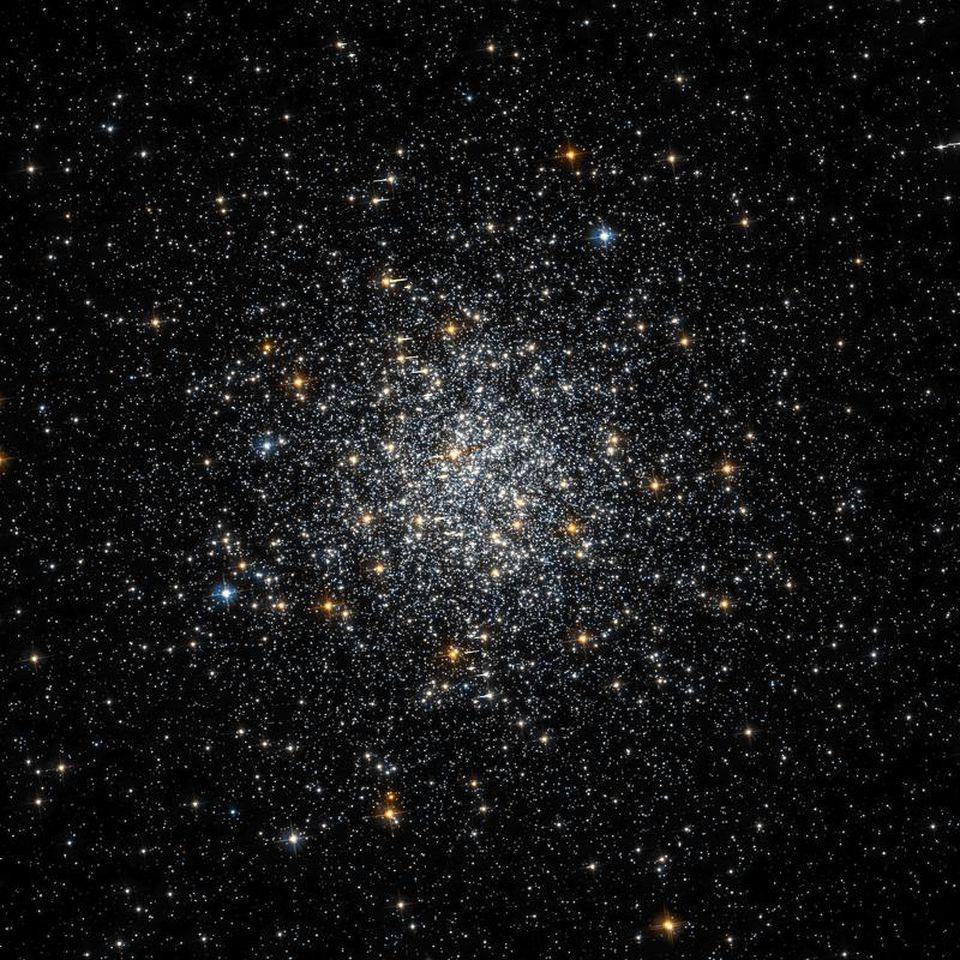
How certain are we of these figures? It’s tough to say. While it’s almost guaranteed that the oldest of these star clusters must be between 12.5 and 13 billion years old, there remain large uncertainties about the amount of time required for a star right around the mass of our Sun to begin its transition into a subgiant, followed by its transformation into a full-blown red giant star. It could be 10 billion years; it could be 12 billion years; it could be some value in between. For years, many astronomers who worked on globular clusters argued that the oldest ones were 14, maybe even 16 billion years old, but a shift in our understanding of stellar evolution now disfavors that interpretation of the data.
Today, we can reliably conclude there’s a lower limit to the age of the Universe of around 12.5-to-13 billion years from the stars we measure, but that doesn’t pin down the age precisely. It’s a good constraint to have, but to arrive at an actual figure, we’d like a better method.
Fortunately, the Universe gives us one. You see, Einstein’s General Relativity, for a Universe filled with (roughly) even amounts of matter-and-energy everywhere and in all directions (like ours), gives a straightforward relationship between two quantities:
- the amounts and types of matter-and-energy present within the Universe,
- and how fast the Universe is expanding today.
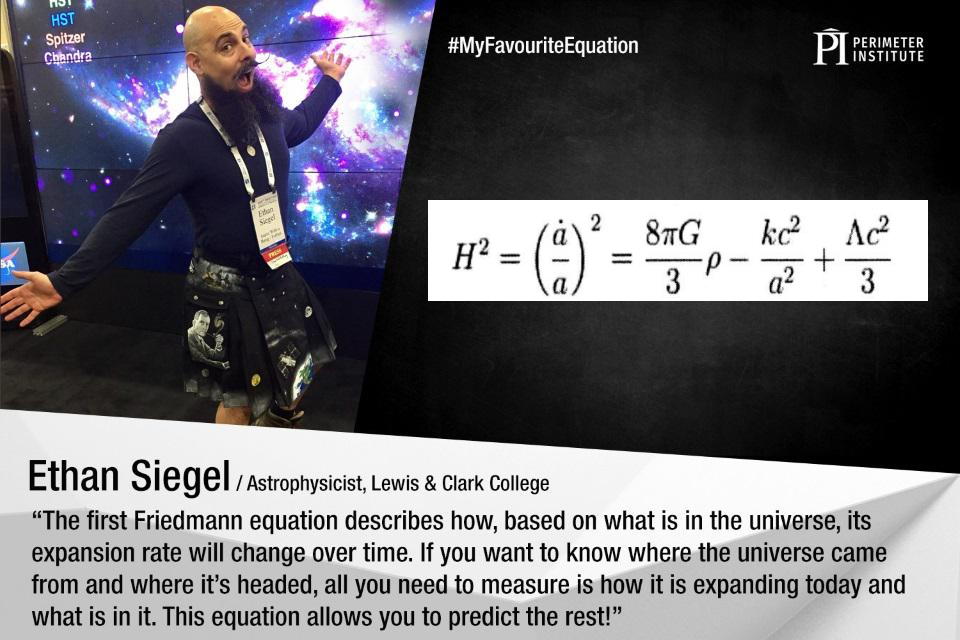
This relationship was first derived all the way back in 1922 by Alexander Friedmann, and the equations that enable us to derive how old the Universe must be are known as the Friedmann equations. It took us many years to measure the constituents of the Universe, but a consensus picture has emerged.
Observations ranging from the abundances of the light elements to the clustering of galaxies to how galaxy clusters collide to distant supernovae to the fluctuations in the cosmic microwave background all point toward the same Universe. In particular, it’s made up of:
- 68% dark energy,
- 27% dark matter,
- 4.9% normal matter (protons, neutrons, and electrons),
- 0.1% neutrinos,
- 0.01% photons (particles of light, or radiation),
- and less than 0.4% of everything else, including spatial curvature, cosmic strings, domain walls, and other fanciful, exotic components.
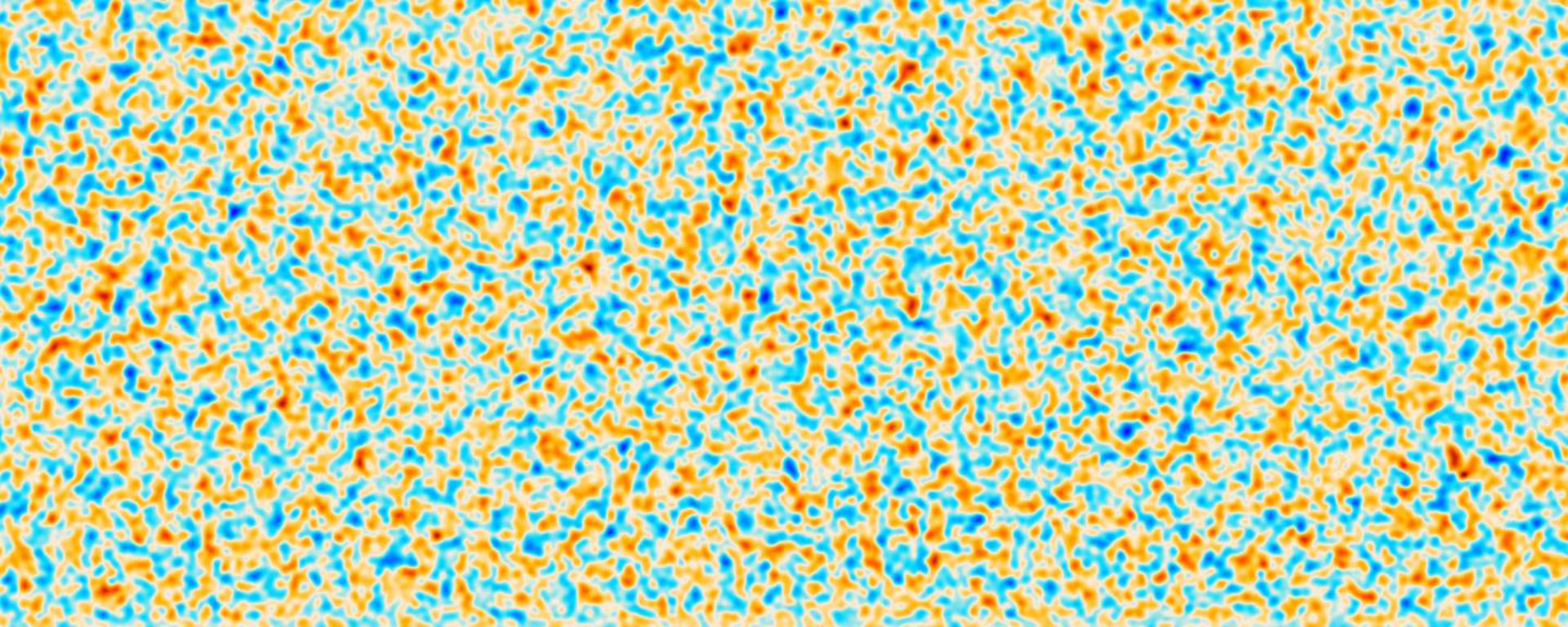
This picture agrees with the full suite of observations that we have; you have to really cherry-pick your evidence very hard — overemphasizing measurements with large ambiguities while simultaneously ignoring large suites of data — to wind up with sets of values that vary significantly from this.
So then, you might think that everything hinges on the expansion rate. If you can accurately measure that, you can simply do the math and precisely arrive at the age of the Universe. Beginning the early 2000s, and ever since, the best data we have comes from the Cosmic Microwave Background: first from WMAP, then from Planck, and, as of July 14, 2020, from the Atacama Cosmology Telescope as well.
Those values have all converged on the same expansion rate: 68 km/s/Mpc, with an uncertainty of just 1–2%. When you calculate what that means for the age of the Universe, you get a very robust 13.8 billion years, completely consistent with everything we know about stars.
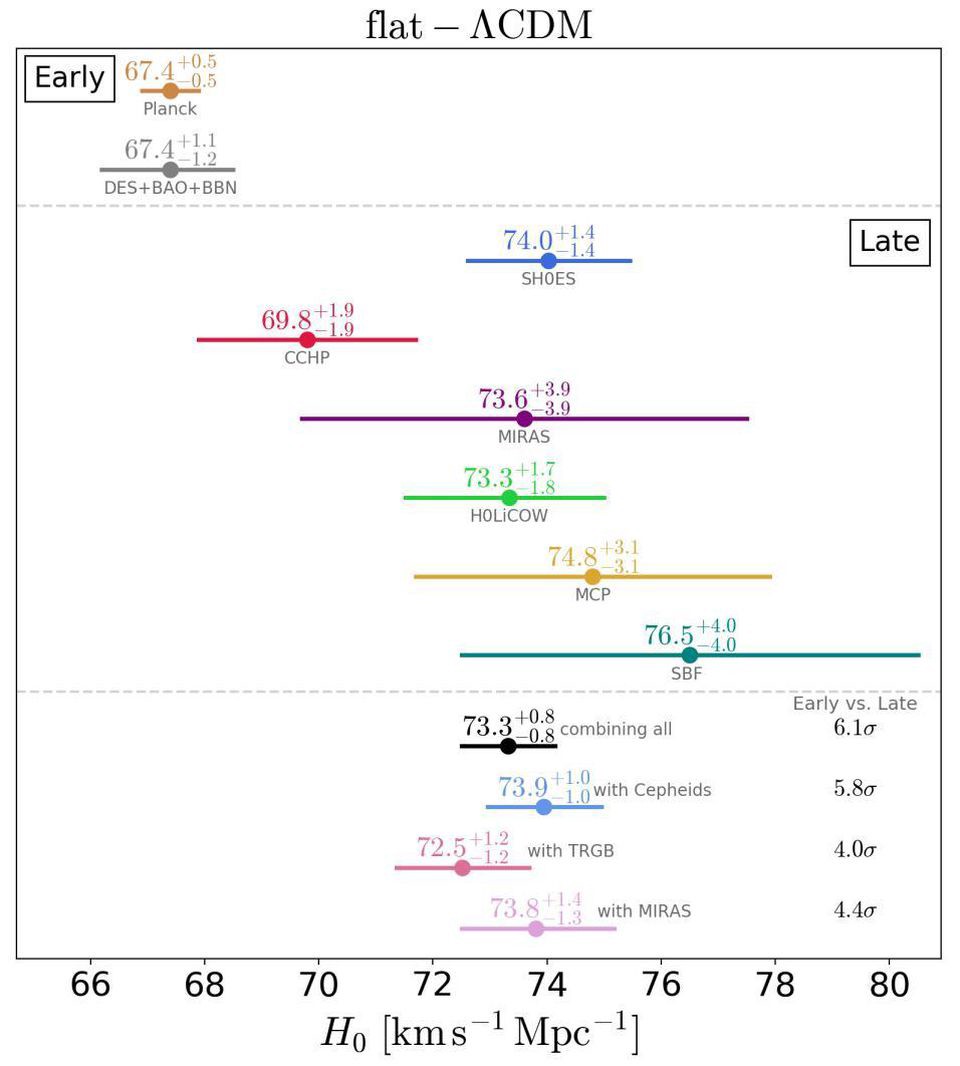
Hang on a second, though. You might have heard — and rightly so — that there’s a controversy over this. While teams using the Cosmic Microwave Background might all obtain one value for the expansion rate, and teams measuring the large-scale structure of the Universe might agree, other methods yield a wildly different value. The other methods, rather than beginning with an early, imprinted signal and measuring how it appears today, begin close by and work outward. They measure distances and the apparent recession speeds of various objects: a method generally known as the cosmic distance ladder.
When you look at the distance ladder measurements, they all appear to give systematically higher values: between 72 and 76 km/s/Mpc: about 9% higher, on average, than the value you get from the Cosmic Microwave Background.
You might think, then, that someone’s right and someone’s wrong. If the distance ladder team is correct and the Cosmic Microwave Background team is wrong, then perhaps the Universe is 9% younger than we think: just 12.8 billion years old.
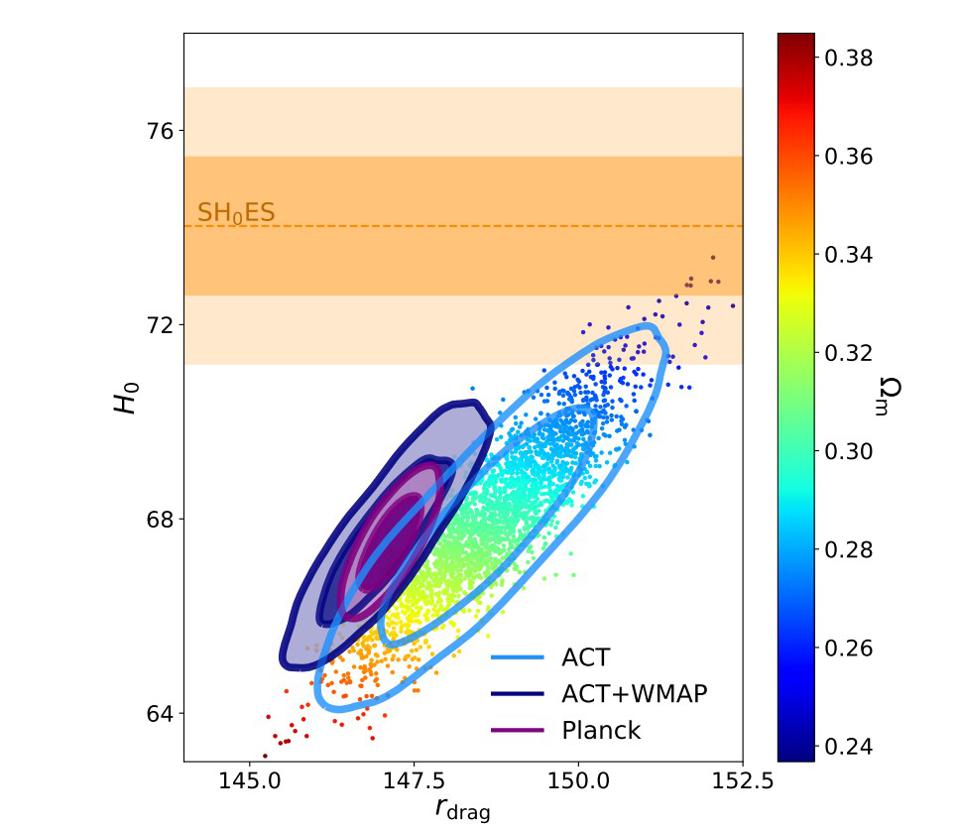
But that’s not how it works in practice. The data from the Cosmic Microwave Background isn’t something that can just be ignored; it’s something that must be reckoned with. The peaks, valleys, and wiggles that we see in its temperature fluctuations are a reflection of all these different parameters combined. Sure, the best-fit values are for a Universe expanding at 68 km/s/Mpc and with 68% dark energy, 27% dark matter, and 5% normal matter, but those can be varied, so long as they all vary together.
Although it doesn’t fit the data quite as well, you can up the expansion rate to, say, 74 km/s/Mpc and still arrive at a very good fit, so long as you’re willing to change the relative fractions of dark matter and dark energy. With a little less dark matter (20%) and a little more dark energy (75%), a substantially higher expansion rate can still fit the data well, although not quite as well, as the consensus values.
What’s fascinating about this, however, is that the derived age barely changes at all; if you explore the full range of what is and isn’t allowed, that 13.8 billion year old figure only comes along with an uncertainty of about 1%: between 13.67 and 13.95 billion years.
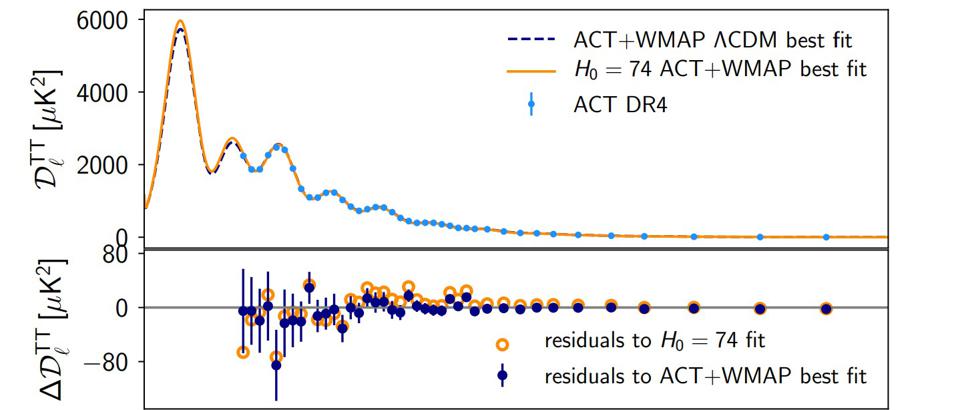
It’s true that there are still many mysteries left to be uncovered about the Universe. We don’t know how fast the Universe is expanding, and we don’t know why different methods of measuring the expansion rate give such wildly different results. We don’t know what dark matter or dark energy are, or whether General Relativity — from which all this is derived — is still valid on the largest of cosmic scales. We don’t even know exactly how much of the Universe is locked up in which form of energy: it could have more dark matter and less dark energy than we think or vice versa; the uncertainties are substantial.
But we do know that the data we have is all consistent with one particular age of the Universe: 13.8 billion years, with an uncertainty of only 1% on that value. It cannot be a billion years older or younger than this figure, not unless a whole host of things that we’ve measured have driven us to wildly incorrect conclusions. Unless the cosmos is lying to us, or we’re unwittingly fooling ourselves, what we know of as the hot Big Bang occurred between 13.67 and 13.95 billion years ago: no less and no more. Don’t believe any claims to the contrary without comparing them to the full suite of data!
Send in your Ask Ethan questions to startswithabang at gmail dot com!
